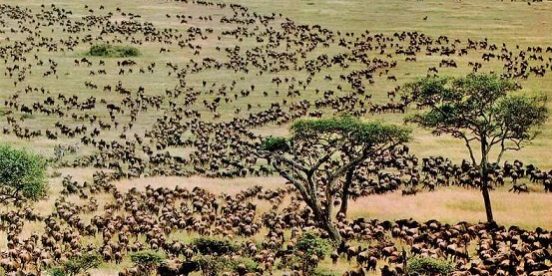Counted among the New Seven Wonders of the World, the Great Wildebeest Migration in the Serengeti plains in Tanzania has kicked off, sending more than 2 million wildebeests into a natural holiday in Kenya.
This immense movement only happens between the Serengeti National Park in Tanzania and Maasai Mara National reserve in Kenya during July through October each year when the wildebeests move in search of water sources.
The most spectacular tourist eye-catching wildebeest migration had this year kicked-off during the COVID-19 pandemic with fewer tourists to watch this natural wonder.
Reports from wildlife managers and tourism executives in both Serengeti National Parks in Tanzania and Maasai Mara Game Reserve in Kenya had confirmed the annual wildebeest migration to kick off this month amid a low turnout of foreign tourists.
The number of international tourists who usually make full bookings at the camps and lodges on the Serengeti plains during the peak season to witness the migration was lower compared to the past year as the effects of the COVID-19 disease continues in key tourist market sources of Europe and America, managers said.
More than 2 million gnus have been migrating within the Serengeti plains in East Africa for greener pastures.
The Great Migration through Tanzania and Kenya each year is the largest overland wildlife migration in the world.
Huge herds totalling up from 2 to 3 million wildebeests, zebras, and gazelles move in an 800 km circuit clockwise through the Serengeti and Maasai Mara ecosystem in search of the best pastures and access to water.
These grazers are followed by lions and other predators by the thousands who wait patiently by crocodiles in the Mara and Grumeti Rivers as the herds follow their inner compass.
The migration has to cross the Mara River in the Maasai Mara in Kenya from the Serengeti plains in Tanzania where crocodiles prey on them.
This massive crossing can be witnessed best in the morning at around 0900 hours to 1100 hours in the mornings and sometimes in the afternoon at 1500 hours to 1600 hours in evenings.
They crisscross the Serengeti ecosystem, traveling a large distance always on the run to ensure that they get to the grass to feast on as well as that they are well dispersed within the massive Mara plains.
Credits: eTN







